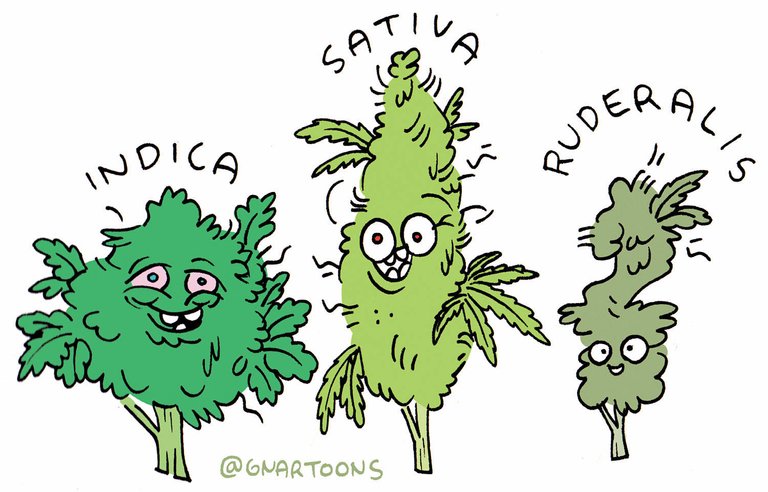
(Illustration by: James Stanton, via seattleweekly.com)
The Three Types of Cannabis
- Sativa
- Indica
- Ruderalis
Sativa
Cannabis Sativa can be found in landrace form in many different places in the world: Africa, Caribbean basin, Mediterranean basin, Latin America, Subcontinential Asia, South East Asia, etc. Sativas are generally classified as being rather lanky plants with long internodal spaces, and also very thin-bladed leaves. The high from Sativas tends to be intensely cerebral, psychedelic, and euphoric, and tends to not have a strong effect on the body or a negative effect on energy levels. They are often used to stimulate creativity, or used as a "wake and bake" strain to get your day started without wanting to crawl back into bed. Sativas tend to take the longest to flower, often a month or more longer than their Indica counterparts, at 3-4 months flowering time.
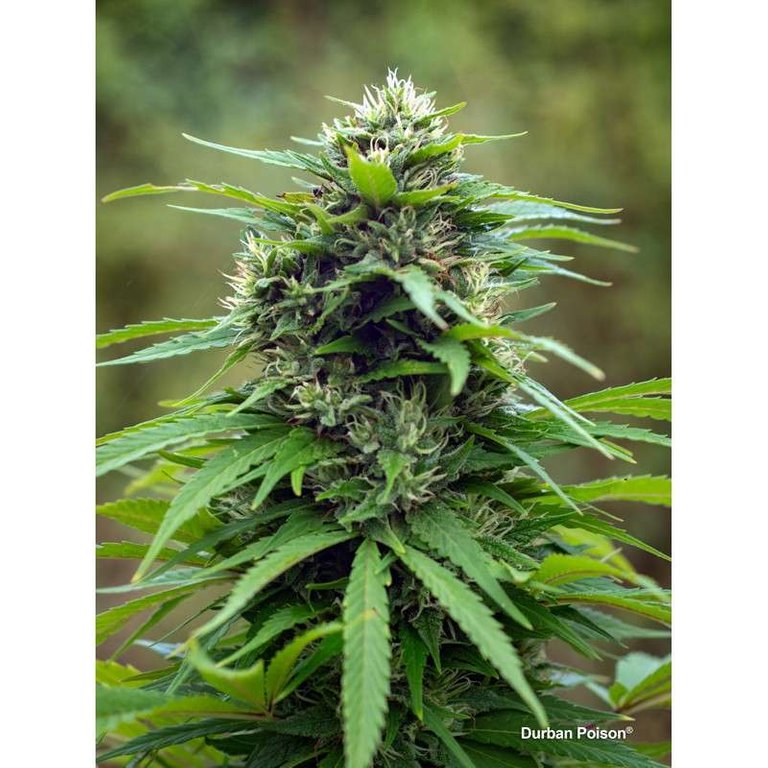
Durban Poison is a very well known, and very potent African sativa.
(Photo Credit: Dutch Passion Seeds)
Indica
Cannabis Indica, sometimes referred to by botanists as "Cannabis Sativa Indica" (which is whole "botanical fist fight" that I'm just going to sidestep) comes from the Mediterranean basin and the middle east, from places like Pakistan, Afghanistan, and India. These plants tend to have very short internodal spacing, are often much shorter than the lanky sativas, and they tend to have very broad-bladed leaves. Where Sativas are cerebral head-highs, Indicas are predominantly deep "body stone", where full relaxation is induced which often leads to snacking, "couch-lock", and maybe napping. Indica plants tend to be fast-flowering, producing a heavy, sticky crop within 2-3 months flowering time.
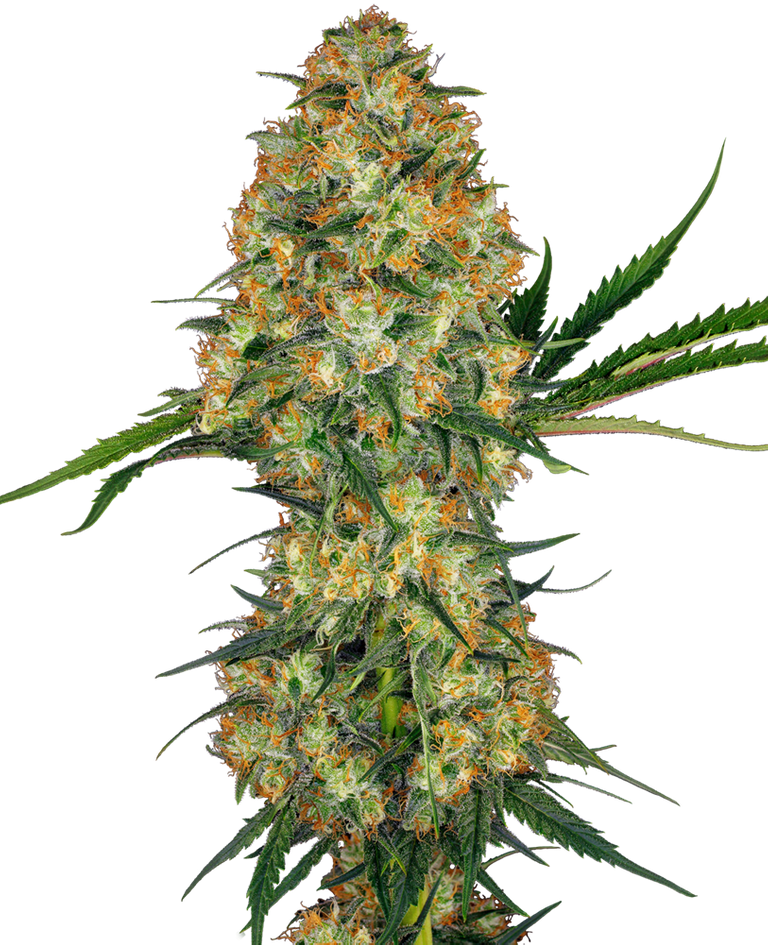
Hindu Kush is a well known landrace Indica.
(Photo Credit: picknmixseeds.com)
Ruderalis
Cannabis Ruderalis is the most recently discovered genus of Cannabis. It grows in various places around the world, on the Steppes of central Asia, the Siberian Tundra, and wild variants can be found in places like Hokkaido, Japan. Ruderalis has virtually non-existent levels of psychoactive THC, so it won't get you stoned if you smoke it. But Ruderalis' CBD levels are off the charts compared to Sativas and Indicas, so it has plenty of potential application in the medicinal cannabis industry helping cancer patients, epileptics, AIDS patients, and people suffering PTSD. Additionally Ruderalis sports a genetically dominant trait that makes its interesting to breeders and growers: it automatically flowers regardless of the photoperiod length! Both Cannabis Sativa and Cannabis Indica are "photoperiod" plants, meaning they require a specific amount of uninterrupted dark for the plant to switch into flowering stage. Ruderalis will "autoflower" regardless of the length of the dark period, which can be as early as 3 weeks after seed germination or as late as 6 weeks after seed germination. Breeders have been breeding landrace Ruderalis plants with traditional Indicas and Sativas to produce autoflowering variants of our favorite strains.
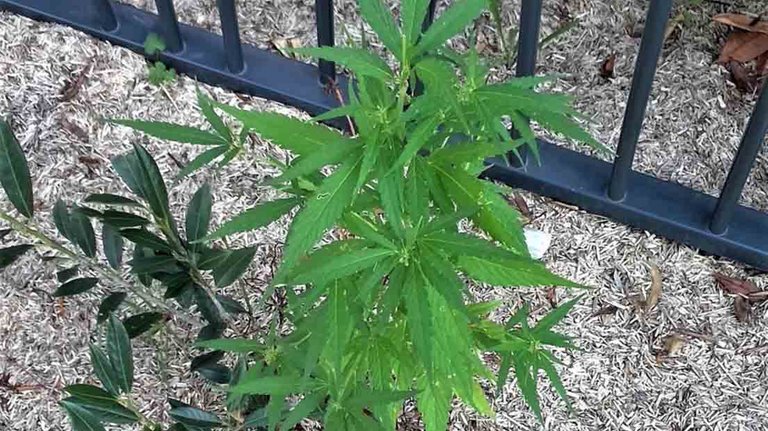
Ruderalis can be found in the wild in places like Siberia and the Steppes of central Asia.
(Photo Credit: semillas-de-marihuana.com)
The Botanical Classification Argument
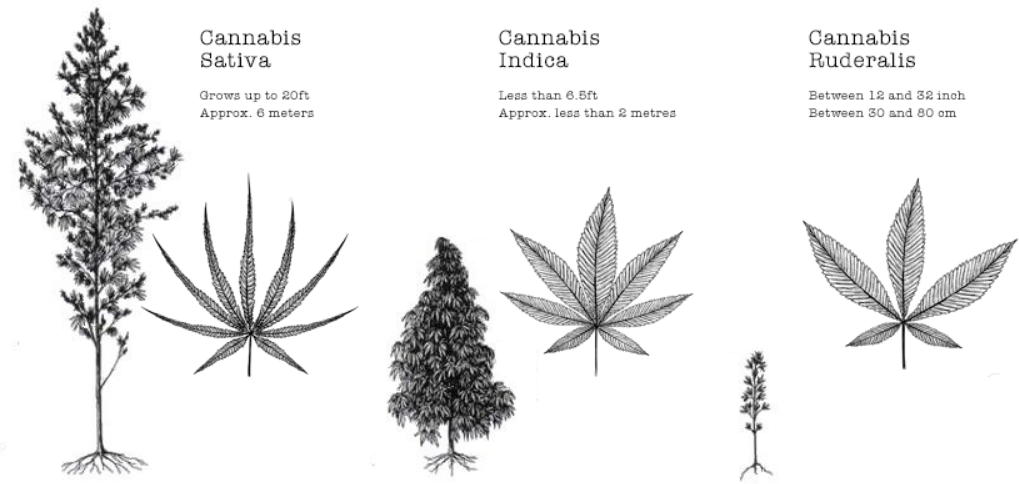
(Photo Credit: mrbl-cbd.com)
Botanists have been arguing about how to give Cannabis and its various varieties a specific taxonomic classification.
Some botanists argue that one, probably Cannabis Sativa, is the likely origin of all the rest, that Indica and Ruderalis are sub-genus versions of Sativa.
Some botanists argue that Sativa, Indica, and Ruderalis are each individual genus of the species Cannabis.
There seems to be historical support for the idea that the original species was Cannabis Sativa, given its widespread presence in so many different places around the world. Further supporting this idea is the point that Indica appears to be very localized to the Pakistan-Afghanistan-Northern India areas. But then again each genus/type has such distinctive growth patterns, flowering times, and physiological and psychological effects, that they could easily be a unique genus of the species Cannabis.
Both arguments are valid, seems like a classification argument to me.
As "The Rev" points out in his article on Skunk Magazine, the typical classification of Sativa vs. Indica vs. Ruderalis really reflects in the flowering time.
Sativas take the longest, Indicas are in the middle, and Ruderalis is basically done 90 days from seed germination.
Whichever side of the taxonomic argument you fall on, I hope that we can all agree that each type has its uses and each is valuable in its own right. Having three different types of cannabis opens the doors to new hybrids, new strains, and further pushes the envelope of what is possible in the world of cannabis growing!
If you liked this article hit that upvote button, subscribe to follow me, and if you want, drop me a comment down below!
Happy toking you crazy connoisseurs!
everyone forgets this hardy little f%ck but Ruderalis is very important especially when talking auto flower. I know growers with auto flower that have never even heard of Ruderalis.